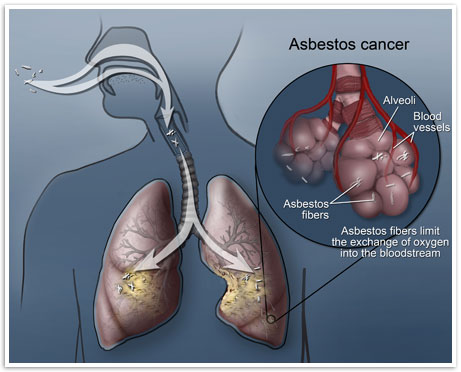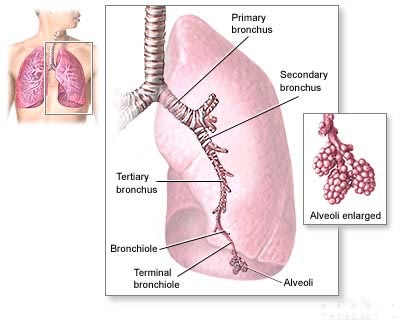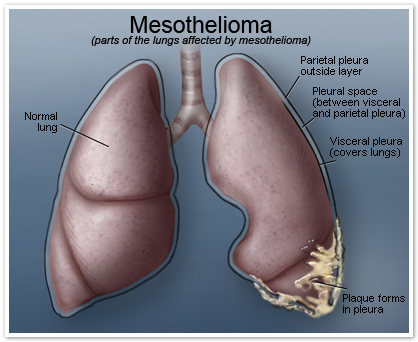mesothelioma asbestos Biogarphy
Source(google.com.pk)We describe, analyze, and contrast historical trends in mesothelioma cases in the US and the UK and discuss these trends in relation to trends in asbestos exposure over the past 60 years. In the US, the number of mesothelioma cases for men is projected to peak at approximately 2,300 cases per year before the year 2000. Based on the historical trend and assumptions concerning current and projected exposure to asbestos, the annual number of male cases in the US is projected to decline to the background rate of approximately 500 cases per year around the year 2055. The time pattern for the number of female cases in the US has been constant at approximately 500 cases per year and is projected to remain at that level. In the UK, the number of male cases is projected to peak in the year 2020 somewhere between 2700 and 3300 cases per year depending on assumptions concerning asbestos exposure for men born after 1958. The time pattern of female cases in the UK mirrors the pattern for males, but at a lower level. The 20-year difference in the timing of the peak occurrence of cases between the US and the UK may be explained by a 20-year difference in the timing of peak exposures. We briefly address the interpretation of these trends for differentiating the mesothelioma potency of amphibole fibers from chrysotile fibers. We conclude, based on trend and exposure projections for the US, that the amphibole-chrysotile debate has little practical significance for risk management if exposures to asbestos continue to be maintained at the low levels of today.Keywords: mesothelioma, asbestos, exposure, lifetime risk, asbestiform mineralBecause exposure to asbestos is considered the principal cause of mesothelioma, the incidence of this disease is commonly interpreted as an index of past exposure to asbestos. To that extent, therefore, patterns in time trends in incidence of mesothelioma or related deaths reflect historical patterns of exposure after accounting for latency. We describe mesothelioma trends in the US and the UK and discuss these trends in relation to trends in asbestos exposure over the past 60 years. Also, we briefly discuss the significance of exposure to specific types of asbestiform minerals, specifically, amphibole fibers, particularly the sodic amphibole riebeckite ("crocidolite"), which have greater potency than chrysotile for mesothelioma. We note, however, that the amphibole-chrysotile debate has little practical significance for risk management if exposures to asbestos continue to be maintained at the low levels of today.
US TRENDS IN INCIDENCE OF MESOTHELIOMATrends in mesothelioma over time have been studied in the US (Price, 1997; Spirtas et al., 1986; Nicholson, 1982; McDonald 1985; Peto et al., 1981) and in the UK (Peto et al., 1995; Hutchings et al., 1995; Peto et al., 1999). For the US, Spirtas et al. (1986) used data on incidence from New York State, Los Angeles County, and the Surveillance, Epidemiology, and End Results (SEER) Program, to demonstrate a statistically significant increase of mesothelioma for males over time by comparing data for 1977-1980 with data for 1973-1976. The trend has been attributed to occupational exposure to asbestos, which, for some workers, was substantial from the 1930s through the 1960s (Nicholson 1982; Dupre et al., 1984). Occupational exposure during this time period in the US occurred in the shipbuilding industry during World War II, in manufacturing, and during building construction (Nicholson 1982; McDonald 1985). Price (1997) used mesothelioma data (pleural plus peritoneal) from the SEER Program database (National Cancer Institute 1995) for 1973-1992 to analyze current trends in age-adjusted and age-specific US mesothelioma rates, and to project lifetime probabilities of contracting mesothelioma for birth-cohorts beginning with the 1885-1889 cohort and continuing through the 1955-1959 cohort.Age-Adjusted Rates
Price (1997) analyzed trends in age-adjusted incidence of mesothelioma for males and females for the period 1973 to 1992. We have added data for 1993 and 1994, the most current data available from the SEER database, and plotted the age-adjusted rates in Figure 1.
These plots show: (i) a consistently higher rate for males versus females across all years (ii) a positive time trend for males and (iii) a virtually constant rate for females over the observed period. Figure 1 also indicates a declining annual growth-rate for males that, on average, is approximately zero after 1989. The average growth-rate for females is zero with the exception of 1982-1983 when a one-time increase in the level by approximately 20% occurred. The incidence of mesothelioma rate among females for 1973 through 1982 is constant, 0.25 per 100,000, and for 1983 through 1994, a different constant, 0.30 per 100,000. Price (1997) argued that the shift at 1982-1983 is an effect of change in diagnostic information
Price (1997) applied life-table methods with the modeling results and assumptions consistent with the patterns of mesothelioma incidence described above to project the numbers of mesothelioma cases expected in the future. These results are displayed in Figure 4. The number of mesothelioma cases among females is expected to remain constant at approximately 500 per year. The number of mesothelioma cases among males is likely to peak before the year 2000 at approximately 2,300 cases per year, and then decline to approximately 500 cases per year by 2055. (The peak shown in Figure 4 occurs in 1997.)
To project the numbers of mesothelioma cases shown in Figure 4 for males, we assumed that the mesothelioma rate for males born after 1959 would continue its downward trend and then level-off. In further support of the validity of these assumptions, we note the reductions in occupational exposure to airborne asbestos that has occurred as a consequence of regulatory action. We assume exposure will remain at low levels in the future. (Refer to the discussion under Exposure Trends, that follows.) Specifically, we applied the rate for the 1890-1894 birth cohort to the 1960-1964 birth cohort and continued forward using the background level characterized by the rate for females, which, historically, has been constant. We projected the number of cases for females by applying the historical rate for females.
Our assumptions are reasonable and consistent with the historical data. Any variation of these assumptions, however, would lead to a different projection of cases in the future. A partial check on the validity of the model for making projections, in addition to the statistical evaluation of the model fit to historical data (Price, 1997), is a comparison of predicted values from the model with the SEER data reported for 1993 and 1994. (Recall that the model was derived from data through 1992, which was the most current data available when the modeling was conducted. Two additional years of SEER data have since been reported.) For males, the raw SEER data show 182 and 188 cases of mesothelioma in 1993 and 1994, respectively. These values are shown in Figure 5, which is a plot of the raw SEER mesothelioma counts versus year. The SEER data represent approximately 10% of the US population; therefore, projections of the total number of cases among males for 1993 and 1994 based on the raw data are 1,820 and 1,880, respectively. These values, and the pattern shown in Figure 5, are consistent with the projected number of cases, the pattern based on historical data, and Poisson modeling summarized in Figure 4. For females, the raw SEER data show 46 and 48 cases in 1993 and 1994, respectively. Using the 10% projection factor described above, the total number of cases among females in 1993 and 1994 would be 460 and 480, respectively. These projections based on raw SEER data are consistent with the projections based on the Poisson regression model for females obtained using the 1973 to 1992 data, which indicate approximately 500 cases annually (Fig. 4).
Because mesothelioma is interpreted as an index of exposure to asbestos, the downward trends observed and projected in the number of mesothelioma cases in the US imply that downward trends in exposure to asbestos occurred 20-30 years before. Individuals who are potentially exposed to other than ambient levels of airborne asbestos include: asbestos workers (e.g., mining, milling, manufacturing, and insulation); removal workers (i.e., workers who rip out asbestos-containing material (ACM) such as sprayed-on fireproofing and pipe and boiler insulation from buildings); maintenance and repair (M/R) workers, including custodians; and the general public, including office workers, school teachers, school children, and others who, at times, occupy buildings with ACM. The downward trends in exposure in the US suggested by declining incidence of mesothelioma was, to a great extent, stimulated by government regulations aimed at controlling exposure to asbestos. Federal agencies have established asbestos exposure limits for workers, promulgated work-practice regulations, and required inspections of school buildings for ACM and assessments of exposure potential in buildings with ACM.
In the mid 1960s, the Department of Labor (DoL) initiated respiratory protection guidance for construction work involving ACM. Coinciding with its formation in 1971, the Occupational Safety and Health Administration (OSHA) established an exposure limit or PEL of 12 f/cm3 in 1972, which was rapidly reduced to 2 f/cm3 in 1976. In 1986, the PEL was further reduced to 0.20 f/cm3 and in 1994 to 0.10 f/cm3. Engineering controls in industry workplaces typically would limit airborne concentrations to a fraction of the PEL to allow for variation in
mesothelioma asbestos Wallpaper Photos Pictures Pics Images 2013

mesothelioma asbestos Wallpaper Photos Pictures Pics Images 2013

mesothelioma asbestos Wallpaper Photos Pictures Pics Images 2013

mesothelioma asbestos Wallpaper Photos Pictures Pics Images 2013

mesothelioma asbestos Wallpaper Photos Pictures Pics Images 2013

mesothelioma asbestos Wallpaper Photos Pictures Pics Images 2013

mesothelioma asbestos Wallpaper Photos Pictures Pics Images 2013

mesothelioma asbestos Wallpaper Photos Pictures Pics Images 2013

mesothelioma asbestos Wallpaper Photos Pictures Pics Images 2013

mesothelioma asbestos Wallpaper Photos Pictures Pics Images 2013

mesothelioma asbestos Wallpaper Photos Pictures Pics Images 2013
No comments:
Post a Comment